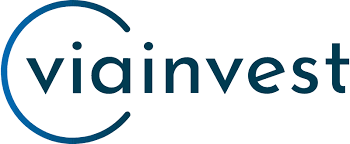DEBT HELP
Bankruptcy Pros and Cons: Don’t Declare Until You Read This

Survey: Have Debt? 30% of People Will Think Worse of You For It
If debt is taking over your life, it can be difficult to see a way out. Maybe you don’t know how to pay off debt, so you aren’t making progress. Or maybe you’re just in over your head and need a way out. You might be considering bankruptcy.
Filing for bankruptcy can be an overwhelming choice when you’re drowning in debt. It may sound like a good idea to start over if you’re losing sleep over money, but bankruptcy comes with big repercussions. If you’re thinking about declaring bankruptcy, weigh the pros and cons first.
In this article
- How does filing for bankruptcy work?
- Bankruptcy basics: Chapter 7 vs. Chapter 13
- 5 possible benefits of bankruptcy
- 8 drawbacks of bankruptcy
- Should you file for bankruptcy?
How does filing for bankruptcy work?
Individual bankruptcy laws have been in place for nearly 150 years. These federal laws are designed to give a second chance to individuals who’ve struggled financially and have nowhere else to turn. There are laws in place that also offer bankruptcy protection to businesses as well. For instance, you may see a business file for Chapter 11 bankruptcy, also known as reorganization.
Typically, personal bankruptcy cases begin when an individual or couple files a bankruptcy petition in bankruptcy court, either on their own or with the help of an bankruptcy lawyer. All bankruptcy cases go through federal courts in the United States, and once you file bankruptcy, you’ll receive an automatic stay which prevents collectors from attempting to collect debts owed. An automatic stay may help you avoid foreclosure, repossession of your car, or wage garnishment.
Once bankruptcy cases are filed in United States courts, bankruptcy judges then review those cases and determine if debts should be discharged. Depending on the type of bankruptcy you file, your bankruptcy proceedings may be slightly different. But no matter which type you file, you’ll likely be required to get credit counseling and debtor education through a licensed credit repair company before a bankruptcy judge discharges your debt.
Bankruptcy basics: Chapter 7 vs. Chapter 13
There are two common types of personal bankruptcy filings, which are typically categorized by chapters under the United States bankruptcy code. If you opt to file bankruptcy, you’ll likely file for either Chapter 7 or Chapter 13.
In Chapter 7 bankruptcy, your non-exempt assets are sold off by a U.S. court-appointed bankruptcy trustee to pay your outstanding debts. Most of what you own — with some exceptions, like your home and car — can be seized to pay off your debt. Non-exempt assets could include real estate that isn’t your primary residence, investments not in retirement accounts, and valuable artwork or jewelry.
Chapter 7 is sometimes referred to as “liquidation bankruptcy” because your non-exempt property is liquidated to pay back the money you owe. But Chapter 7 also requires applicants to prove they have a very low income. If you don’t meet the eligibility for Chapter 7, you may not be able to file it.
Those that don’t qualify for Chapter 7 may choose to file Chapter 13 bankruptcy instead. This process doesn’t liquidate your property. Rather, this filing sets up a court-ordered payment plan, which will require that you make set monthly payments for between three and five years. After completing the repayment plan, any remaining debts may be eligible for bankruptcy discharge.
5 possible benefits of bankruptcy
Bankruptcy is a negative word, but there’s some good that could come out of it. When given the chance at a new beginning, you may feel more prepared to handle your money better than you did before.
1. You could consolidate your debt (or have it discharged)
Keeping up with debt payments is hard when you can’t afford them at all. Bankruptcy can offer some debt relief by consolidating your debt into manageable payments. Sometimes your responsibility for some debt can be wiped away. The filing you select will determine this.
2. You may get to keep your property
There are some personal exemptions when you file for bankruptcy, so you could keep things like your home, car, or retirement accounts in either Chapter 7 and Chapter 13 filings. Exact exemptions depend on the state laws where you live and the value of your assets, so consult a professional if you’re not sure what property may be at risk.
While some assets may be protected in certain circumstances, it’s not guaranteed you’ll keep the rest of your property — particularly under a Chapter 7 filing. A Chapter 13 filing is usually a safer bankruptcy option if you’re a homeowner or have other major assets.
3. Chapter 7 bankruptcy can be completed quickly
The timeline for your bankruptcy completion depends on which option you file under. A Chapter 7 bankruptcy can often be completed in fewer than six months. That means you’ll be able to restart your credit journey relatively quickly. Compare this to a Chapter 13 filing, which can take years to complete the mandatory repayment plan.
4. Filing bankruptcy should put a stop to debt collection attempts
When you file for bankruptcy, creditors must stop contacting you to collect a debt. In fact, creditors aren’t allowed to contact you throughout the bankruptcy process — from when you file to when that debt is discharged. However, not every amount you owe will be a debt that goes away when you declare bankruptcy (more on that below), so if you’re getting hounded for an outstanding debt, check to see if you’re still responsible for it.
7 Things That Can Happen When You Live Debt-Free
5. You can start with a clean slate
When you’re drowning in debt and can’t see a way out, bankruptcy gives you the opportunity to start over with a clean slate. Although there are some instances where debt isn’t gone after bankruptcy, you could have most of it wiped away or reduced and paid off through a repayment plan. A fresh beginning can help you restart your financial journey on the right path.
8 drawbacks of bankruptcy
Bankruptcy has the potential to help you in a dire financial situation, but it can also have devastating consequences for your future. Bankruptcy should be a last resort when you’ve run through all your other options to take care of debt. If you’re considering it, make sure you know the possible blows you’ll face.
1. Your credit will tank
If you’re months (or years) late in paying outstanding debt, your credit score is probably pretty low already, but a bankruptcy filing can still cause additional harm to your score. The more accounts listed in your bankruptcy filing, the bigger the impact on your credit score. Along with that, a bankruptcy filing can stay on your credit report for seven to 10 years, depending on which chapter you file under.
2. It could be harder to borrow in the future
Having a bankruptcy mark on your credit report is like having a black cloud over your head for as long as a decade. Lenders see bankruptcy marks as a big red flag and will be hesitant to work with you. It could stop you from getting a home, car, or even a credit card in the future.
3. Not all types of debt are eligible for bankruptcy
A big misconception with bankruptcy is that if you declare it, you’re no longer responsible for paying any current debt. While filing for bankruptcy may help wipe out unsecured debt like medical bills, personal loans, or credit card debt, not all debt is eligible to include in bankruptcy filings.
For example, student loans and secured debt like mortgages are usually still your responsibility after you file. Alimony can also not be discharged by bankruptcy. So even if you declare bankruptcy, you still may have to face outstanding debt. Depending on the debt you struggle most with, bankruptcy may not be worth it.
4. Your property might be repossessed
When you declare Chapter 7 bankruptcy, your assets are liquidated to pay off your outstanding debt. That means almost anything you own has the opportunity to get repossessed to make sure your debt gets paid. While Chapter 13 temporarily safeguards your possessions because you’re under a repayment plan, you may still face repossession if you don’t stick to the court’s orders.
5. It can be hard to qualify for
If you’re declaring Chapter 7 bankruptcy, you’ll need to prove you can’t afford to repay your debt through a means test. This test is to ensure your income is low enough to declare bankruptcy. If it isn’t, your disposable income will be evaluated to see that after your important expenses are paid (like housing and child support), you don’t have anything left over to pay for your debt. Not everyone has enough debt to file bankruptcy.
6. It could take years to complete the process
If you successfully declare Chapter 13 bankruptcy, you could see years of paying a court-ordered repayment plan. Repayments under a Chapter 13 filing typically take anywhere from three to five years to complete.
7. Your cosigners could be on the hook
While cosigners can help you secure a loan with a lower interest rate or get a credit card, these people are taking on an enormous responsibility. When you don’t pay back your loan that someone else has cosigned for, it crushes your credit score and theirs. Along with that, they’re still responsible for paying unsecured debt that has their name on it, even when you file for bankruptcy.
8. Bankruptcy isn’t free
From filing for bankruptcy to attorney fees, you could be on the hook for hundreds or even thousands of dollars. Filing costs more than $300 for both chapters (though filing fees may be waived in some instances), and if you hire a bankruptcy attorney, you could pay thousands of dollars in legal bills. And remember, if you file for Chapter 13, you’ll have a repayment plan set up, so you’re still paying for your debt long after you declare.
Should you file for bankruptcy?
If you’re considering bankruptcy, you have a lot of potential negatives to consider, from the cost of filing for bankruptcy to the negative effects on your credit score. While a fresh start may sound like a good idea, bankruptcy doesn’t go away for a very long time and can seriously impact your borrowing in the future.
Bankruptcy should be a last resort, saved for when you don’t have any other choice. Explore all your other options, such as debt consolidation and budgeting changes, before you decide to file. If you feel like you have no other options, you can learn more about the different types of bankruptcy and review bankruptcy forms at USCourts.gov.
Great for Over $20K in Debt
 Visit Freedom Debt Relief
Visit Freedom Debt Relief
Freedom Debt Relief Benefits
- Recommended for debts $27,000 and higher
- Resolve your debt in as little as 24 – 48 months
- They’ve helped save their clients over $10 billion
- Over 600,000 customers and counting
Visit Freedom Debt Relief
Is Credit Card Debt Bad? 6 Ways It’s Holding You Back
Unmasking Online Deception: An In-Depth Social Catfish Review
Purple Garden Psychics – ($1/Min) FREE Trial Offers, Real Experience & Benefits And More

Refinancing an Auto Loan: How to Know If It’s a Good Idea

Reverse Mortgages Pros and Cons: Ripoff or a Good Idea?

8 Ways it Just Got Easier to Achieve Student Loan Forgiveness
Unmasking Online Deception: An In-Depth Social Catfish Review

Orchard Bank Credit Cards | NOT a Scam!

PrivacyGuard Review

How to choose where to study as an international student


